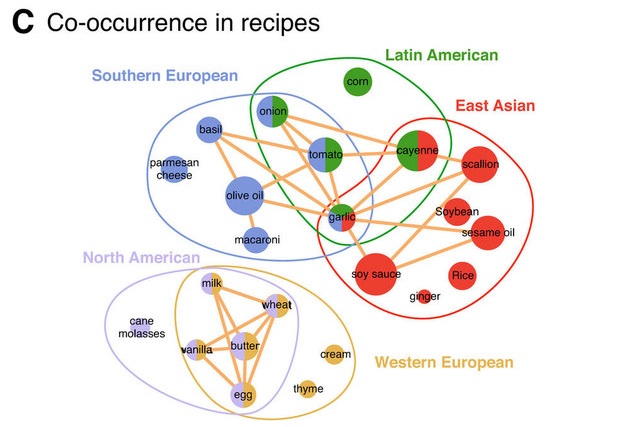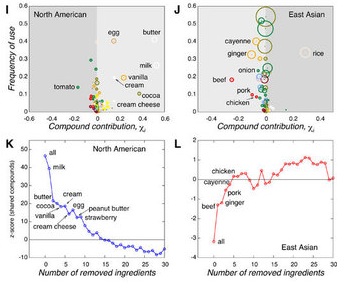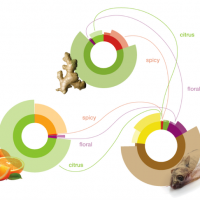In 1992, chefs Heston Blumenthal and Francois Benzi came up with a “food pairing hypothesis” stipulating that certain flavors go together because of their similar chemical make up. SENSE for TASTE turned that hypothesis into an online tool called Foodpairing which, for a fee, “highlights foods that share common tastes and is designed to help identify unexpectedly tasty combinations,” states the company’s website. The result is a Foodpairing tree; a visual aid for chefs and cocktailmakers.
Now an article in Scientific Reports disputes the foodpairing concept. Cultural preferences, the report states, “raises the question of whether there are any general patterns that determine the ingredient combinations used in food today or principles that transcend individual tastes and recipes.”
The Flavor network and the principles of food pairing by Yong-Yeol Ahn, Sebastian E. Ahnert, James P. Bagrow and Albert-László Barabási puts much more emphasis on ethnic and cultural differences in cuisines than chemistry, noting that western dishes tend to use “ingredient pairs that share many flavor compounds, supporting the so-called food pairing hypothesis.” East Asian foods, by contrast “tend to avoid compound sharing ingredients.”
 The report sees these differences as an opportunity. “Given the increasing availability of information on food preparation, our data-driven investigation opens new avenues towards a systematic understanding of culinary practice.”
The report sees these differences as an opportunity. “Given the increasing availability of information on food preparation, our data-driven investigation opens new avenues towards a systematic understanding of culinary practice.”
Finally, the report concludes by saying that the current data sets available are limited and incomplete, and that more research on ingredients and flavor is needed. “Better compound databases mitigating the incompleteness and the potential biases of the current data, could significantly improve our understanding of food,” summarizes the report.






